The Liberty Swing
In addition to the adaptive swing seat, there are two swings on the market, mostly in Australia and Europe, which greatly enhance the play experience for people with disabilities. There is controversy as well as huge praise for both. We will explore all of this in the column today.
The first swing is the Liberty Swing, which enables a person who uses a wheelchair to truly swing. The wheelchair is wheeled up on the platform. The platform is then released and it swings. It really swings, not just slightly rocking back and forth
My son would absolutely love to play on this swing. He would have loved it as a small boy, however now as a young adult it would be an incredible experience because he rarely leaves his wheelchair. When he was young and light weight, it was easy to transfer him from the wheelchair on to an adapted swing seat. Now, he is twenty and weighs too much for one person to transfer him; so for him to swing and laugh again would be amazing.
There are communities in the United States that have put in a Liberty Swing. Due to its weight and numerous moving pieces, a Liberty Swing needs to be fenced. The gate on the fence would then need to be locked. Therefore, when someone wants to use the swing, they need to obtain a key from someone. This means that the swing needs to be placed in a park where there is staff that can come and unlock the gate. Some communities arrange for a family to come to the park district office and check out a key. Either way, it makes the use of the swing somewhat cumbersome for the family.
The other effect of having to fence in the swing is that it promotes segregation instead of inclusion. While the swing is completely accessible, it is separated from the rest of the play equipment, and a person who is using it is not playing with his friends. While for my son, the experience of swinging would outweigh the need to engage with his peers. He is in the vast minority. The percentage of children who use a wheelchair among the population of children with disabilities is only 1-3%. And of this 1-3% only a slim number have such a significant disability that movement experience is more beneficial than the social experience.
Liberty Swing:
Pros: Unique experience for people using a wheelchair, accessible, no transfer required
Cons: Not inclusive, expensive (It costs approximately $20,000 installed.)
 The Bird Nest Swing is a multi-person swing. It is round and sinks in like a nest. (Although some of the ones that are made in the US are flat.) Bird Nest Swings often become the most used piece of equipment of a playground as everyone of any age or ability can play on the swing.
The Bird Nest Swing is a multi-person swing. It is round and sinks in like a nest. (Although some of the ones that are made in the US are flat.) Bird Nest Swings often become the most used piece of equipment of a playground as everyone of any age or ability can play on the swing.
For a child who is not able to sit up on their own, they can lay down on the swing and be pushed by family or friends. For a child that feels insecure in open space, it is easy for a parent to get on the swing with him and hold him while being pushed. For a child with autism who craves a vestibular experience, the bird nest swing provides such within a social setting. For a person that uses a wheelchair, it is designed to be positioned to facilitate the transferring. There appears to be very few negatives to a Bird Nest Swing.
However, this is not the case. The U.S. Consumer Product Safety Commission puts outs guidelines for playgrounds. These are guidelines are not federal laws, but many communities have adopted them as the legal regulation for their city or town. These guidelines say:
“With the exception of tire swings, swings that are intended for more than one user are not recommended because their greater mass, as compared to single occupancy swings, presents a risk of impact injury.”
This means that Bird Nest Swings are not IPEMA Certified in the United States. The few companies that sell something similar to the Bird Nest Swing sell them without the certification. In order for a community to put one in, the community must determine what the regulations for a multi-person swing would be for them.
It doesn’t help that recently one of these types of swings was recalled because it was placed too low to the ground and a few children broke their legs. The swing is back on the market with a correction to how it hangs, but that may not reassure an insurance company.
This is a shame, though. Bird Nest Swings can greatly enhance the inclusiveness of a playground and do so without making it obvious. This is a piece of equipment that everyone loves regardless of ability. The CPSC made this a guideline when multi-person swings were often metal and heavy and therefore dangerous. The Bird Nest Swing is no more dangerous than a tire swing, which is allowed. I wish there was an update to this regulation so that every playground in the US could include this wonderful swing.
Last week, Prince Henry opened a new playground and spent time playing on a Bird Nest Swing with bunches of children. The picturestell you almost everything you need to know about a Bird New Swing.
Bird Nest Swing:
Pros:Supported swing that promotes inclusion, enjoyed by everyone on the playground (not just a few children), affordable
Cons: Not approved by CPSC, a person using a wheelchair needs to be transferred.
Comments1


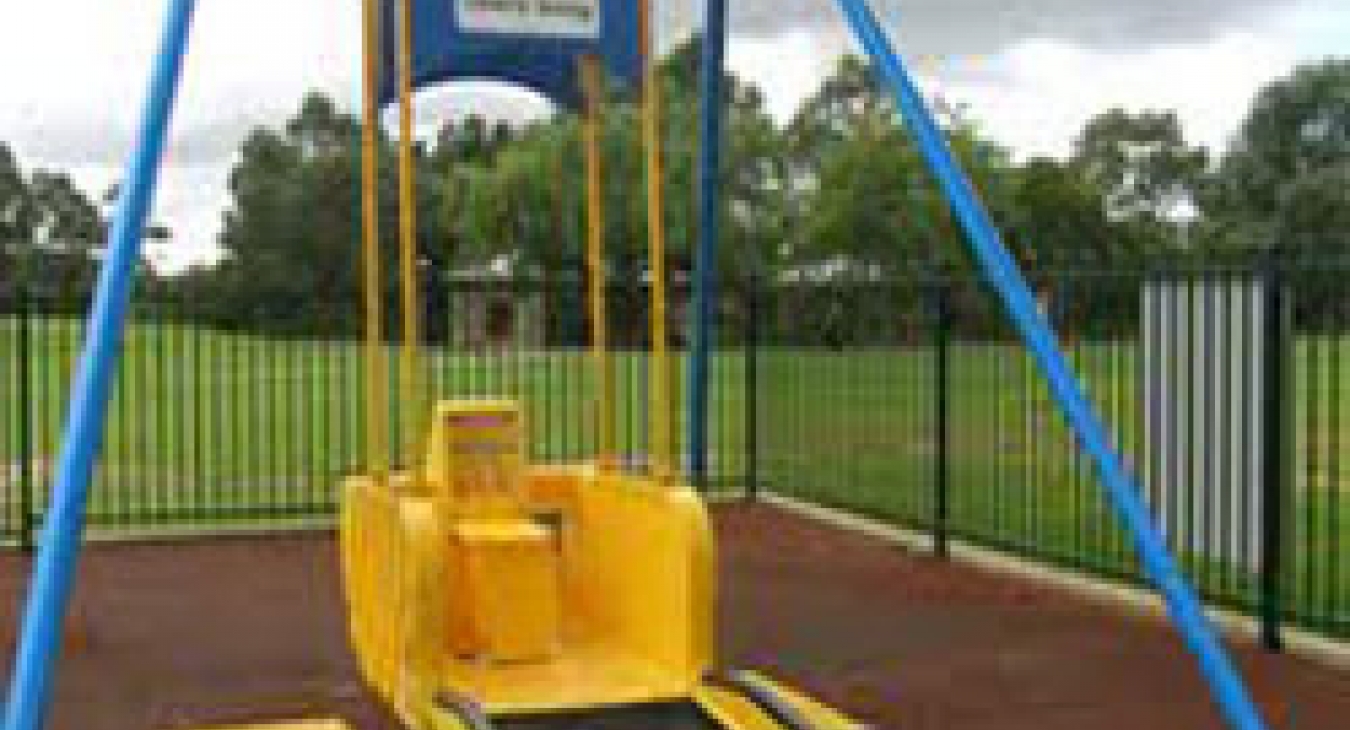
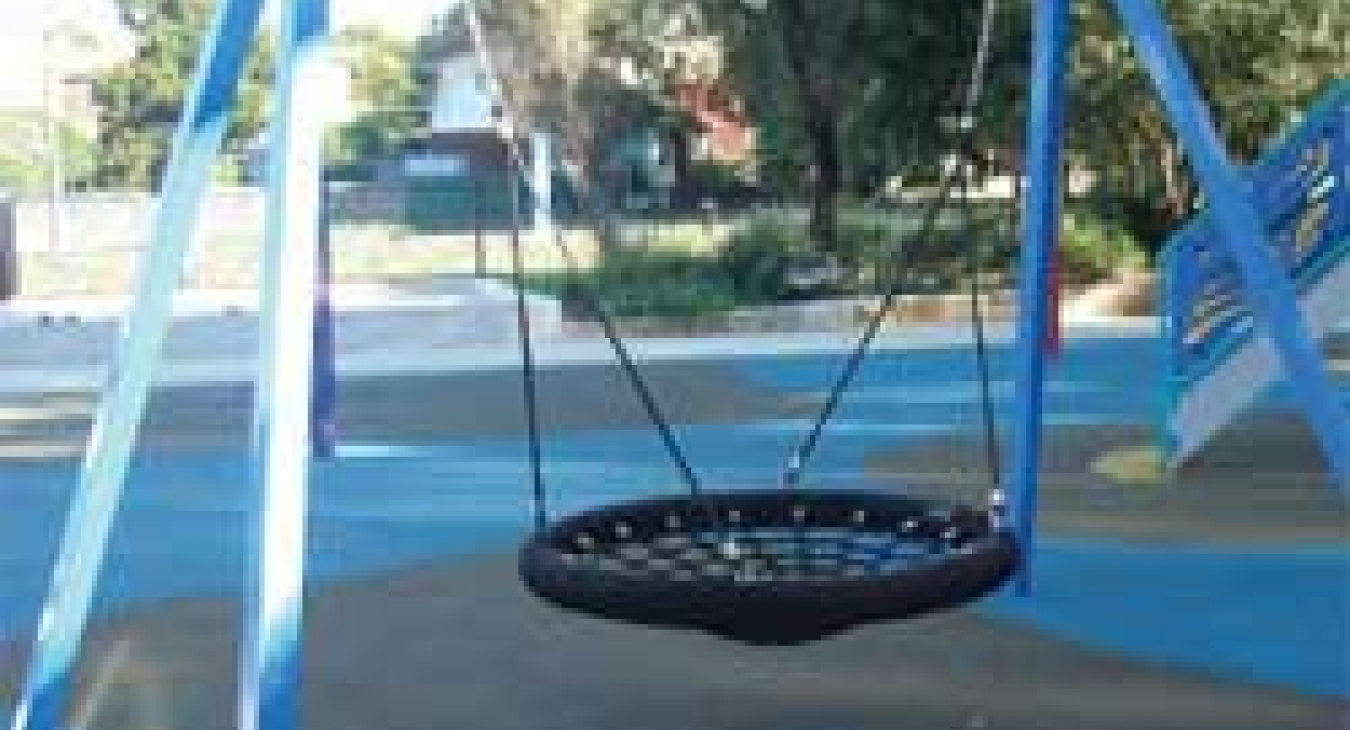
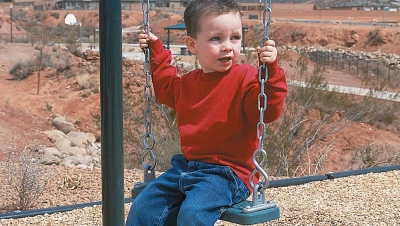


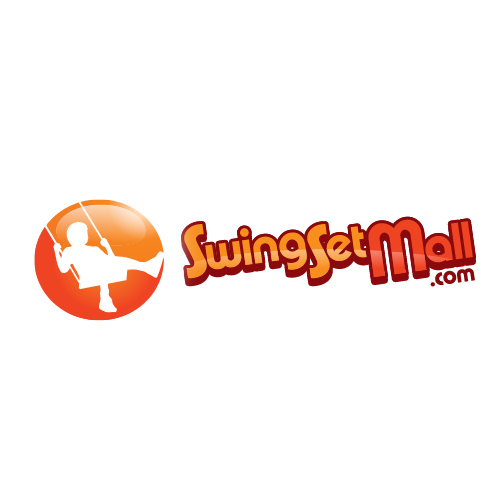

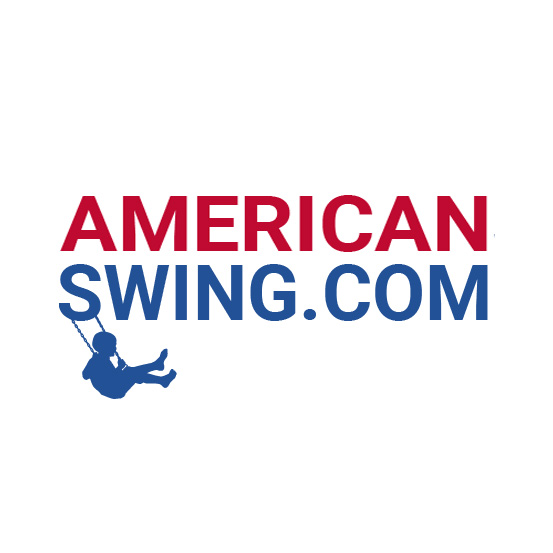
The issue I see with some
The issue I see with some adaptive playgrounds is that they are accessible to everyone or mixed in with non adaptive features. The problem with some of these swings made for kids with disabilities, (and I am talking about the large plastic free swinging kinds), are super dangerous to those kids who are moving around the swing. Even for kids playing with it they can be dangerous because they are heavy and hang low to the ground. I've seen kids drug under and incur serious hip injuries resulting in multiple surgeries and kids getting hit by the plastic swings in the throats or the back of the head resulting in concussions and wind pipe damage. This all due to one swing on one small playground that abuts a field used for soccer and flag football games. The field is right next to an elementary school, but there's chainlink fencing all around the perimeter of the school, so parents won't allow their kids to go around, out of their vision to play on the bigger playground. So loads of younger sibs are playing on this tiny adaptive playground with one big plastic swing (the injury maker) and one other regular swing. It's not safe. Adaptive playgrounds need to be designed and placed in areas where they are 1) big spaces 2) fenced in and signed 3) adjacent to regular playgrounds so that siblings can play safely near each other without risk of serious injury due to some of the heavier more dangerous adaptive playground equipment. I am all for playgrounds for those who are disabled/handicapped/physically/mentally challenged, but they need to be just for their usage only.
Birdsnest swing danger ... beware!
These birdsnest swings are very heavy weighing over 25kg PLUS the weight of the child/adult riding in it. A swing with an adult and child riding in it could easily weigh well over 100kg. When it is swinging with this weight behind it, the swing can knock an adult off their feet, and can certainly cause a very serious injury to a child.
A disabled man in recent years became a partial quadraplegic when the swing hit him from behind causing him to fall forward severely injuring himself. Beware.
Swing Problem?
We have one of these nest swings in Memphis. Thought it was great until recently. I was pushing my 10-year-old in the swing. Went to move a child out of the way & walked back too close to the swing. Given its weight & momentum, it picked me up. I rode it to the apex and was then flung onto my back. Broken vertebrae. My daughter stayed safely seated in the nest.
Teri,
Teri,
Thanks for the information about ASTM. This should help community groups advocate for these types of swings.
Birds Nest Swing
With recent changes to the ASTM F1487-12 standard which include a dynamic impact test for swings many of the Birds Nest or Cradle type of swing do meet the ASTM standard and are IPEMA certified. It is the CPSC handbook that is holding back the use in states that mandate compliance with CPSC. Even in these states, progressive park districts are using them as they understand the great benefits for all children.
Keys
Julie--In the US, we don't have that kind of key available. That makes it more difficult to put in Liberty Swings as most of the time the park needs to have staff to unlock the gate. I wish we did have such a thing.
Mara
Swing VS Swing
Hi Mara,
I very much enjoyed your article. I have had some heated discussions on our facebook page about the Liberty Swing with people very anti the fenced in area and the use of the key to get access. In Australia all families with a family member with a mobility disability can purchase a MLAK key which gives access to all of the Liberty Swings and accessible toilet facilities. We have ours attached to our son's wheelchair and whoever is with him can then have access to these facilities. It is a very easy solution to the key argument. The keys are easy to purchase and we have the freedom to use the swings whenever we like.
I'm truly thrilled that there is discussion and that things are changing. I do know that many of our US followers are desperate to have access to these playgrounds and when I do a story on one in Australia they are green with envy.
I did get to experience the new playground at Santa Monica Beach but felt in such a central and popular location more could have been done.
Thanks for your work.
Kind regards
Julie
I agree
Julie--
I agree with all of your points. In the column, I wanted to give the pluses and minuses of both types. I also wanted to advocate for change so that we could add a lot more of these swings in our playgrounds.
I also agree that it is great that we get to discuss the variety of what we put in our playground, instead of that our children should be able to play in playgrounds.
Swing vs Swing
I think both swings have their place. I have heard all the arguments against the Liberty Swing but I cannot be swayed (pardon the pun). The children/teens and adults who use a Liberty Swing are often the people who cannot access or use anything else in a park. Nothing replaces the freeing feeling of swinging. Even my son who can sit doesn't feel secure in a birds nest swing because the netting isn't a stable base for him. As far as segregation goes with the Liberty Swing, I wouldn't want to see a toddler hit by the weight of that swing and when our son swings we are all in with him enjoying his delight. He is certainly not on his own. Sometimes in life I think it is better not to pit two things against each other. I like both for different reasons. I'm just thrilled that we could possible be discussing two pieces of accessible equipment in the park. This wouldn't have even been a discussion when my son was younger. We've come a long way. Julie
Add new comment